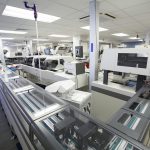 Whilst discovering new materials can be incredibly valuable, it can also be incredibly time consuming. As such, it’s perhaps no surprise that researchers are turning to technologies like artificial intelligence to help them. A recent report advocates the creation of a Materials Acceleration Platforms (MAPs) that the authors believe could cut the average time for creating a new material from 20 years to just one or two.
Whilst discovering new materials can be incredibly valuable, it can also be incredibly time consuming. As such, it’s perhaps no surprise that researchers are turning to technologies like artificial intelligence to help them. A recent report advocates the creation of a Materials Acceleration Platforms (MAPs) that the authors believe could cut the average time for creating a new material from 20 years to just one or two.
The report is the outcome from a workshop hosted recently by the Mexican Ministry of Energy (SENER), the U.S. Department of Energy, and CIFAR featuring 55 leading scientists from around the world.
It’s part of the Clean Energy Materials Innovation Challenge that is itself a subset of the Mission Innovation initiative that’s run by the EU and 22 other countries around the world to accelerate innovation in clean energy.
Accelerating innovation
The report highlights the tremendous potential for advancing the pace of materials discovery via the use of AI, robotics and high powered computing. For instance, they talk of the advent of autonomous laboratories that can design, perform and interpret experiments.
“The performance, efficiency and affordability of clean energy technologies can be increased by finding materials with the properties you need. At the moment, we’re very much like Edison looking for filaments for his light bulb, testing them one by one in a sequential fashion, by trial-and-error, until we find the one that works. This report lays out a road map for methods that will let us quickly discover and design materials with exactly the properties we need. The key is to create fully integrated MAPs from beginning to end that enable humans to accelerate their pace of discovery,” the authors say.
In total, the report makes six recommendations that it believes could rapidly speed up materials development. They recommendations will lead to what the authors call materials acceleration platforms (MAPs) that would consist of not only automated robotics but the rapid synthesis and characterization of materials and artificial intelligence to speed up the pace of discovery.
The MAP to the future
The six recommendations are:
- “Self-driving laboratories” that design, perform and interpret experiments in an automated way;
- The development of specific forms of AI for materials discovery;
- Modular materials robotics platforms that can be assemblies of modular building blocks for synthesis and characterization;
- Further research into computational methods for inverse design;
- New methodologies for bridging the length and timescales associated with materials simulation; and
- Sophisticated data infrastructure and interchange platforms.
These developments will only occur if multidisciplinary, international teams of scientists and engineers work together.